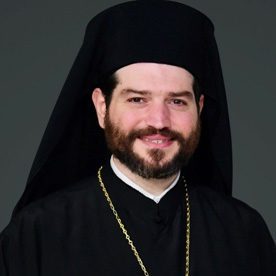History of the March

On January 22, 1974 thousands of pro-lifers participated in the first March for Life to stand up for the unborn. An inspiring rally was held as Members of Congress announced pro-life legislation and expressed their support for the pro-life cause. The program concluded with a “Circle of Life” march around the Capitol, followed by participants lobbying their Members of Congress.
Soon after that first March in 1974, it became apparent that congressional protection for the unborn was not on the horizon. Instead of sitting on the sidelines, Nellie decided that the MARCH FOR LIFE, rather than the originally anticipated one-time event, would instead be held every year until Roe v. Wade was overturned. That year, the March for Life became incorporated as an action-oriented non-profit organization, and the “Life Principles” were developed as the underlying guideline of the organization.
With Nellie’s leadership, the March continued to grow and develop each year. Nellie was an ever-faithful voice for the most vulnerable in society, working to protect the preborn until her last hours of life. While each MARCH FOR LIFE has faced a unique challenge or obstacle, the numbers of participants have continued to grow. Below are some highlights of the dedication of pro-lifers over the past forty years:
1987
On January 22, 1987, as pro-lifers began their annual pilgrimage to Washington D.C. for the MARCH FOR LIFE, many faced a terrible snow storm. While some had to turn back, thousands continued on to Washington D.C. to witness for the preborn. Nellie later commented “Our continuing to march that day was not stubbornness to defy the elements, but willingness to cope as best we could in our determined efforts to defend the unalienable and paramount right to life of our born and preborn brothers and sisters.” Police estimated that 10,000 people trod through the deep snow that day.
1990
In 1990 it was apparent that the March was growing tremendously. For the first time, buses had to park at Robert F. Kennedy Memorial (RFK) stadium and pro-lifers took the Metro to the March. Unfortunately, there was an escalator collapse in which many pro-lifers were hurt; as a result, many others had to walk miles to the rally. But, they graciously walked the “extra mile” with joy for the sake of life!
1995
In 1995 there were disruptions in the planning of the March because of shootings at an abortion facility. The press sought comment from the MARCH FOR LIFE Education and Defense Fund, and we reassured them that the March for Life is dedicated to protecting life through peaceful means.
1998
In 1998, to commemorate the 25th anniversary of Roe and Doe, the dedication of prolife Americans was proven again with an unprecedented number of Marchers. The rally featured three former pro-abortion activists who had become pro-life: Dr. Bernard Nathanson, founder of NARAL, Norma McCorvey, the plaintiff in Roe v. Wade, and Sandra Cano, the plaintiff in Doe v. Bolton.
2002
In 2002 the MARCH FOR LIFE was held just months after the September 11th terrorist attacks on America. The march went on and thousands courageously made the journey to Washington, DC despite the uncertainty and fear that the attack brought upon the American people.
2005
In 2005, on the stage, the family of Terri Schiavo, who were then battling to save her from starvation and dehydration, reminded the marchers that the right to life applies not only to the unborn, but all, including the disabled and terminally ill.
2006
The year 2006 brought excitement to the March, as two Supreme Court seats opened up in 2005. Following the retirement of Justice Sandra Day O’Connor and the passing of Chief Justice Rehnquist, President Bush nominated Judge John G. Roberts and Judge Samuel Anthony Alito to the Supreme Court. The President also raised Justice Roberts to Chief Justice of the Supreme Court. Pro-lifers had hope that Roe v. Wade/Doe v. Bolton cases would be corrected.
2009
The March in 2009 was held two days after the Inauguration of President Barack Obama, who had expressed his support of abortion. Perhaps in response, the March for Life estimated that it was the largest March to date, with hundreds of thousands of participants.
2011
In 2011, there was a sense of renewal as the 111th Congress was sworn in, bringing many new faces to Washington, including many who were elected on pro-life platforms. At the rally, a record fifty-three members of Congress spoke to voice their support for the unborn!
2013
The 2013 March will be filled with sadness as pro-lifers mourn the 40-year legacy of Roe v. Wade, and the passing of Nellie Gray. At the same time, we are filled with a sense of gratitude as we look back on all the great work that she did in organizing and running the March for Life for the better part of a century. Nellie dedicated all of her energy to advocating for the most vulnerable in society. Under her leadership, the March grew from 30 concerned citizens gathering in a Washington D.C. home to the present day march that draws hundreds of thousands of people from all fifty states and countless countries!
